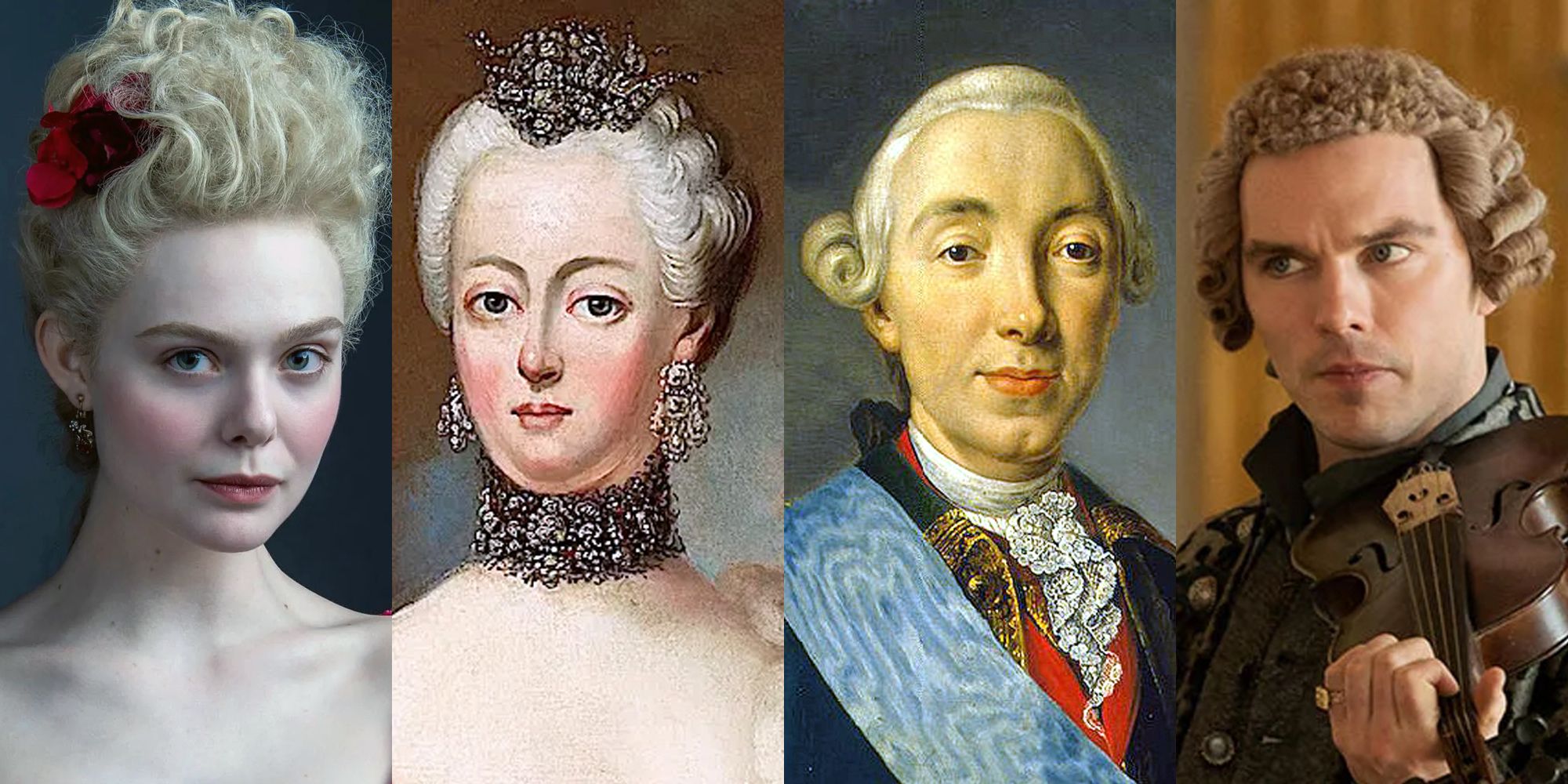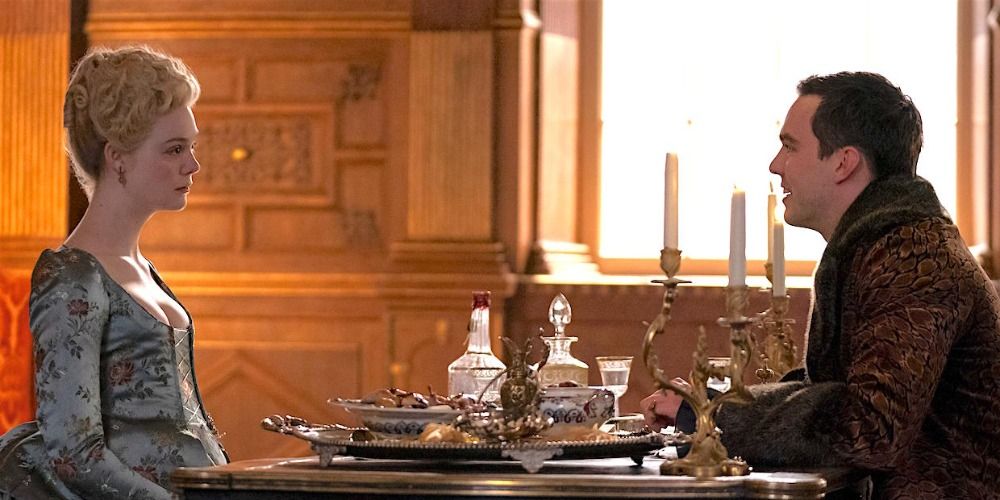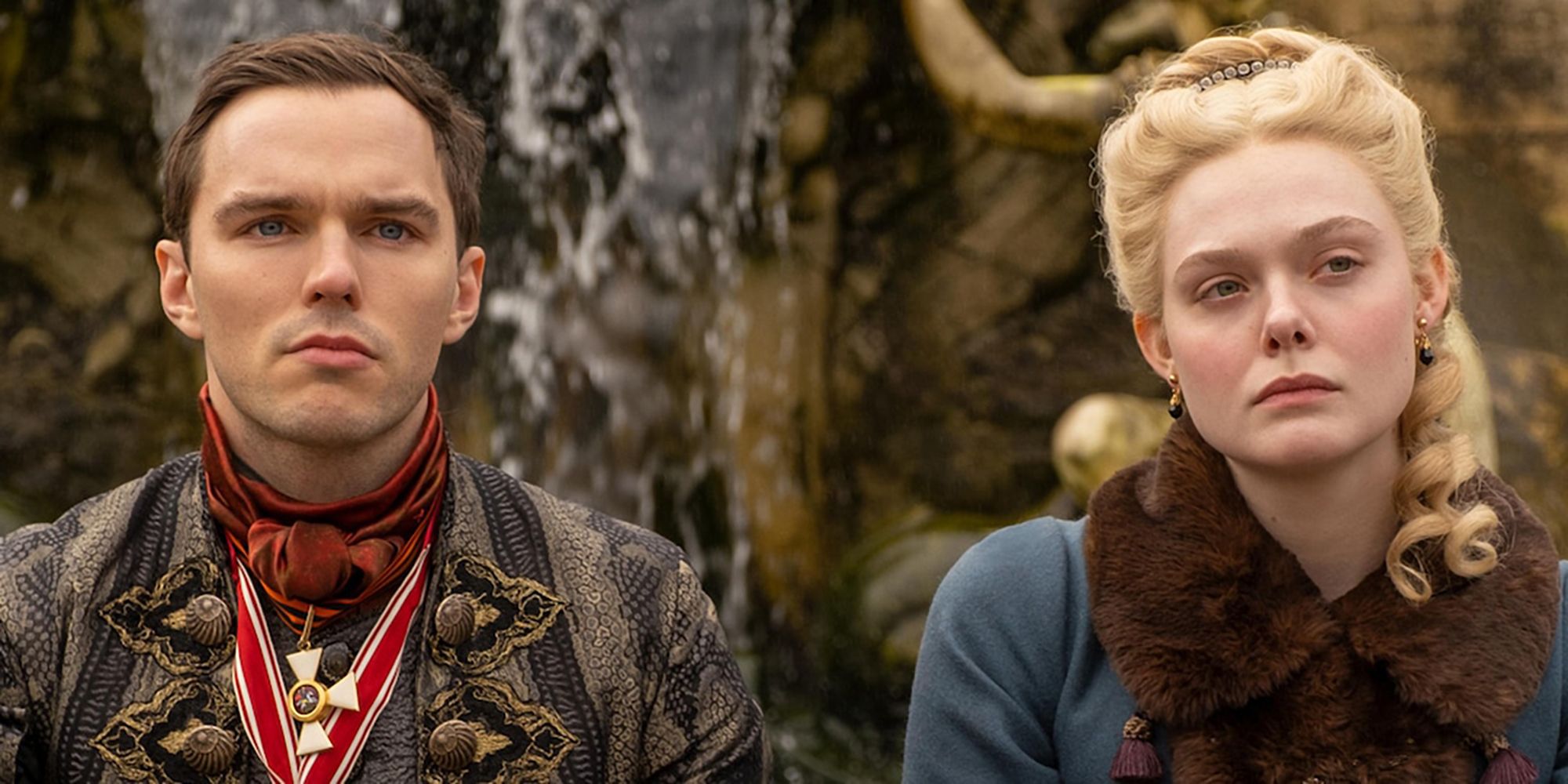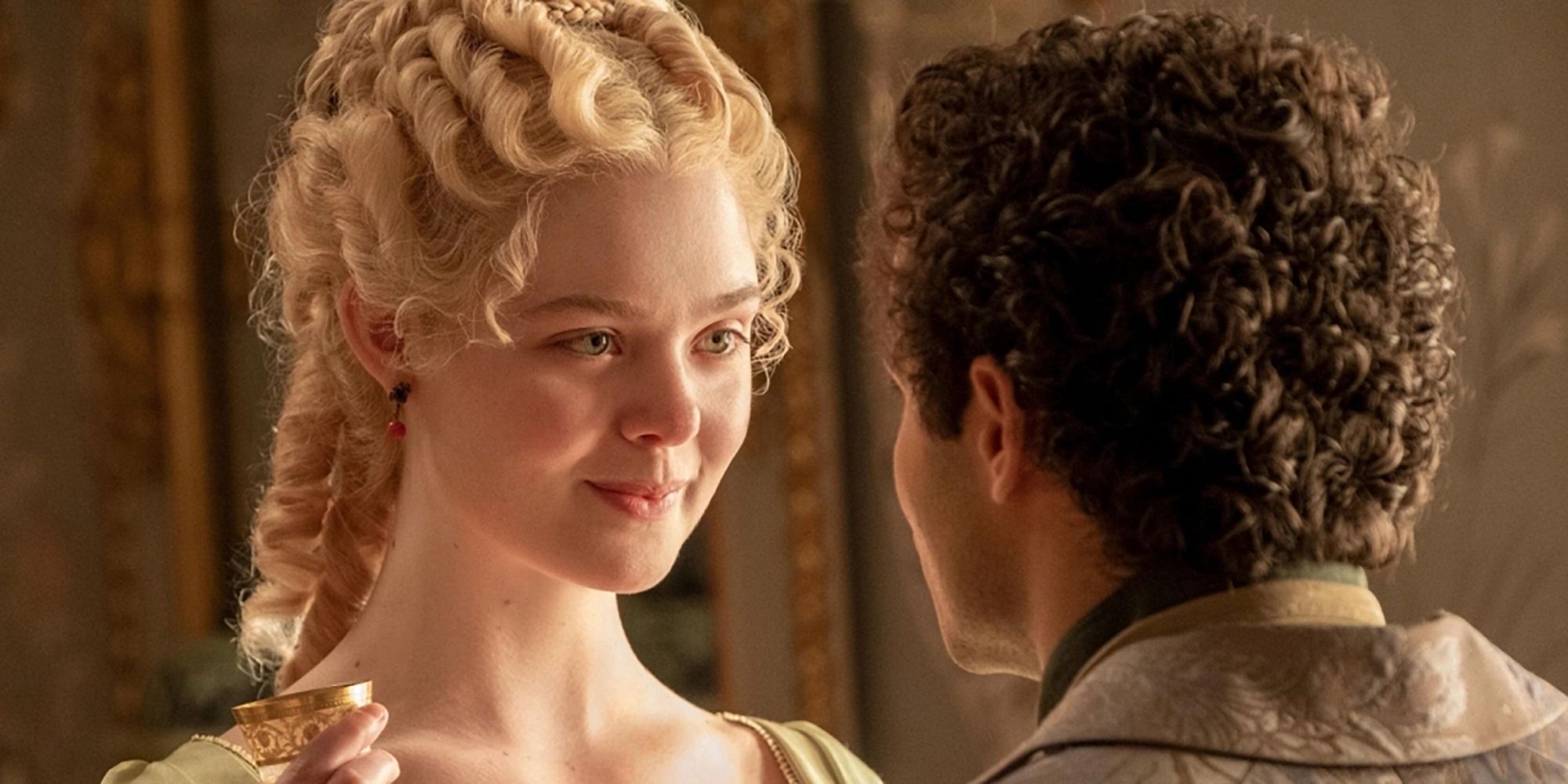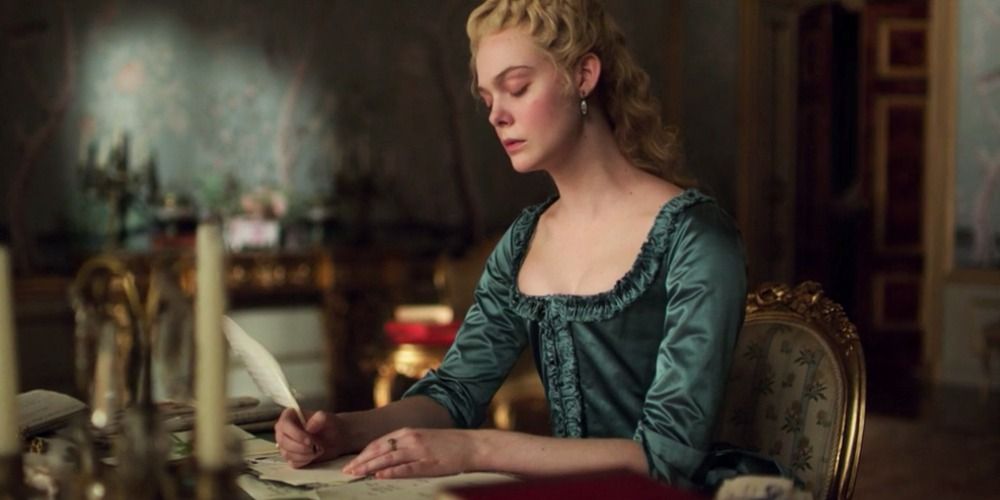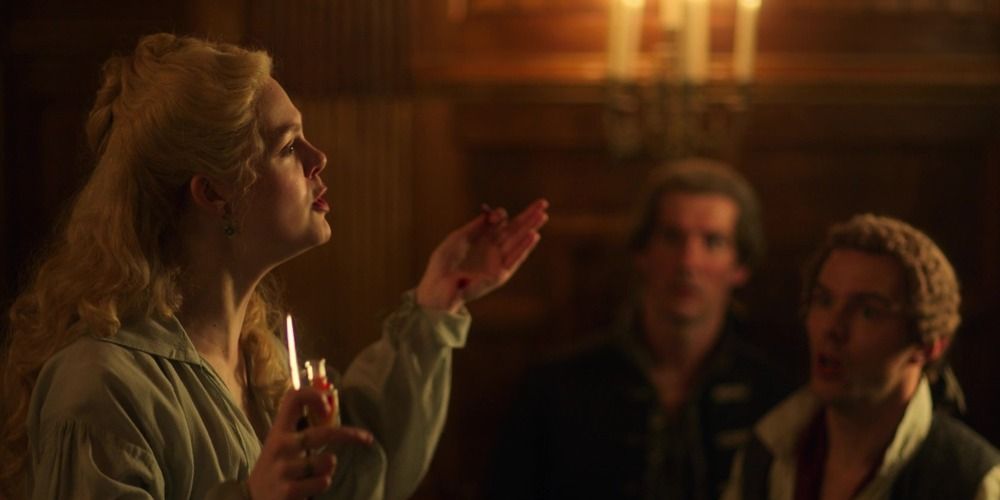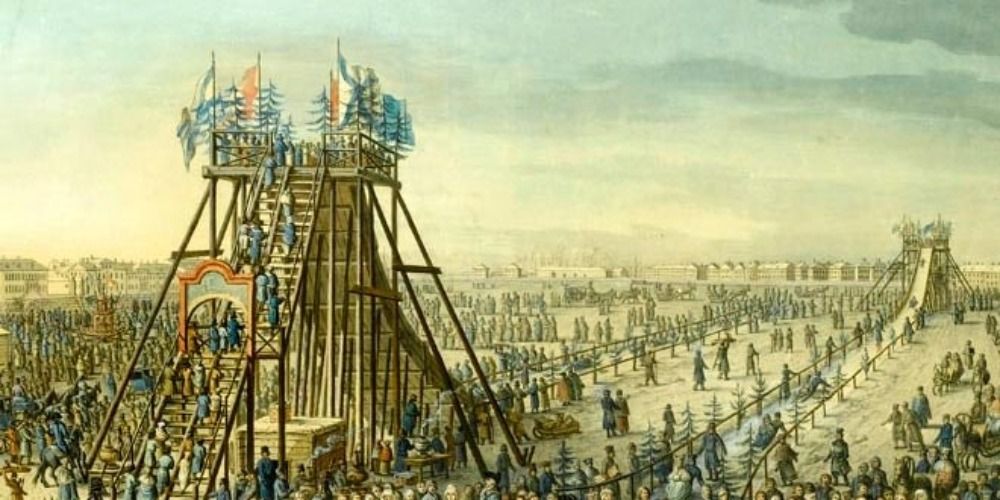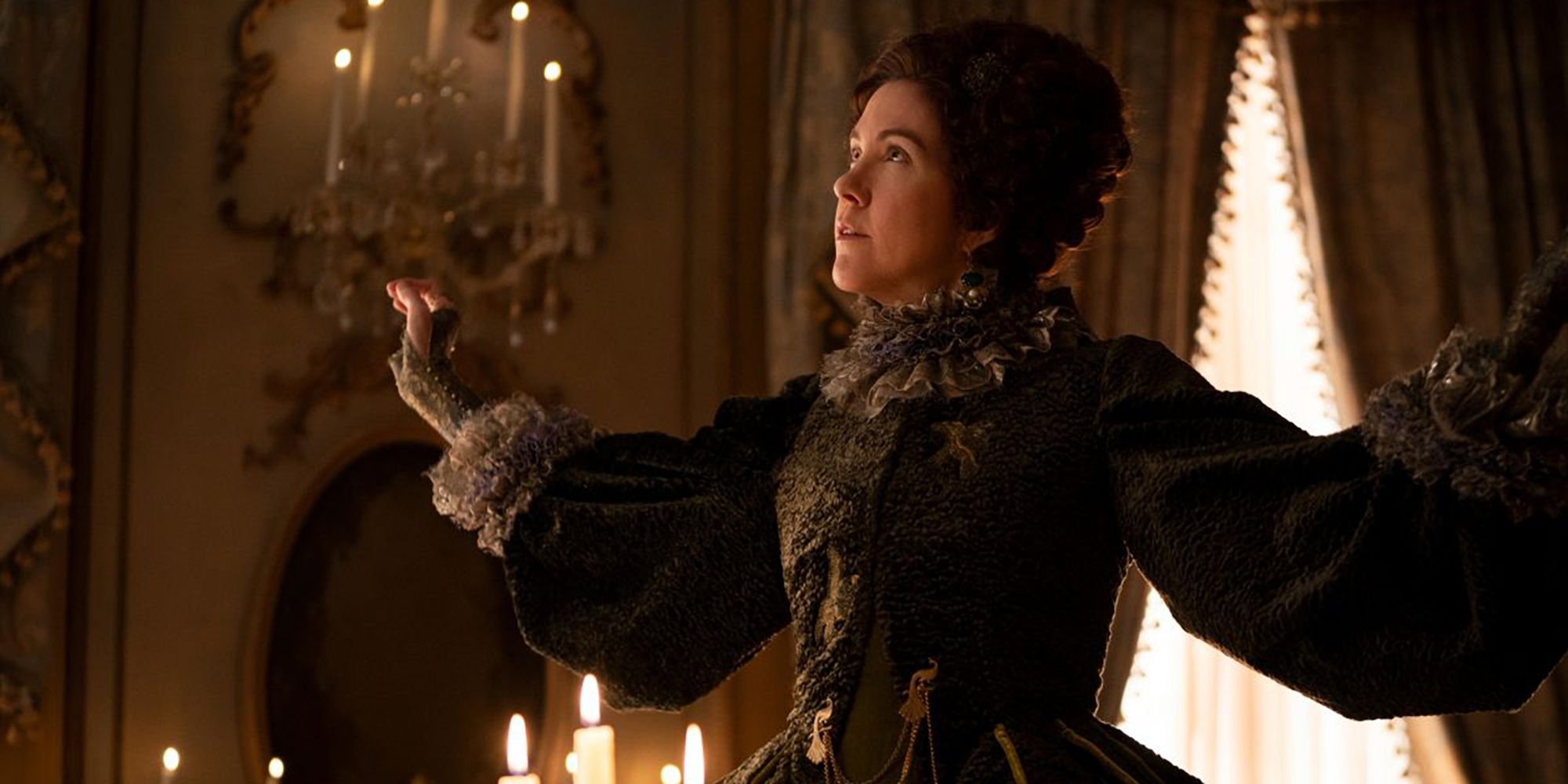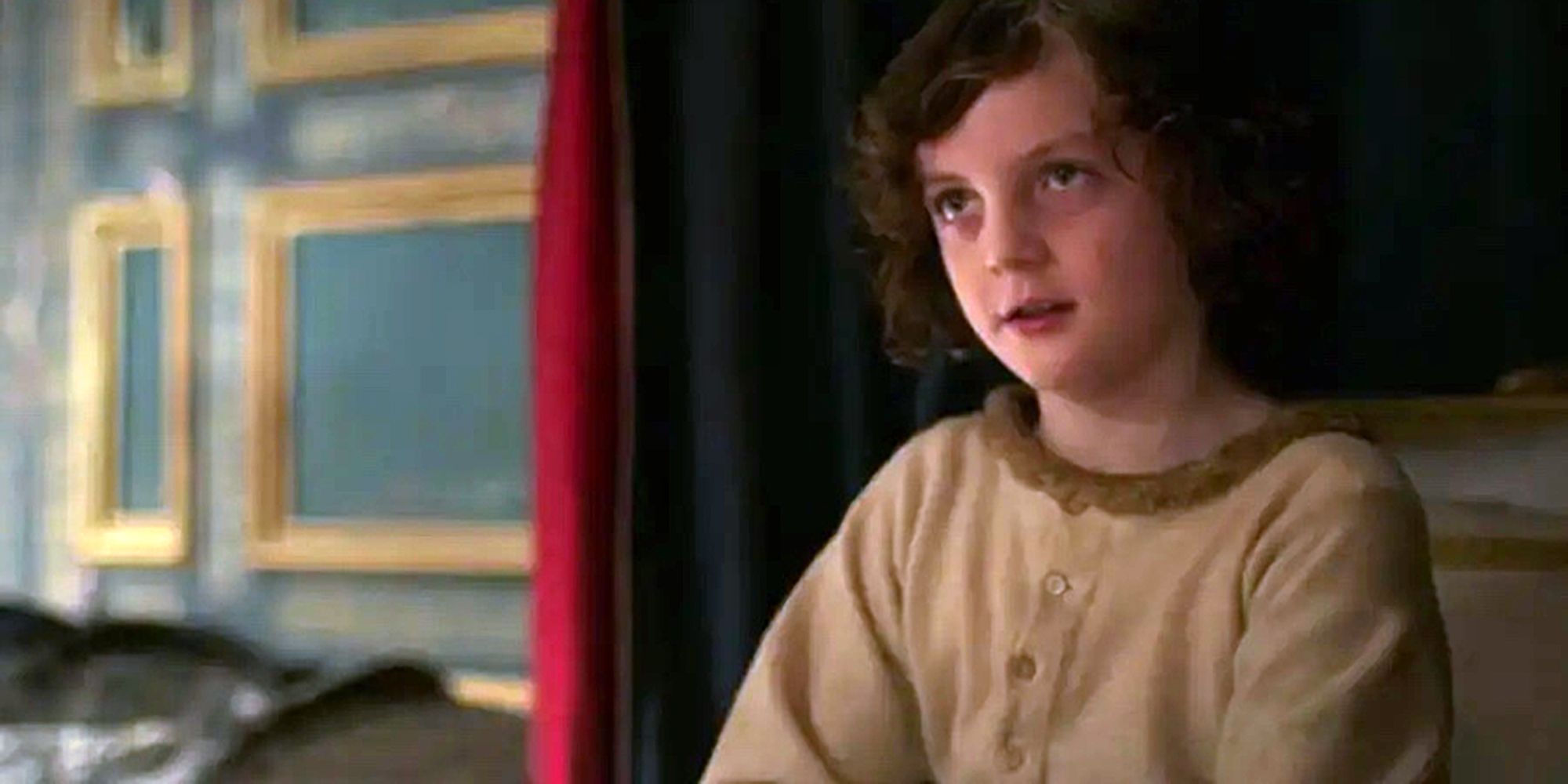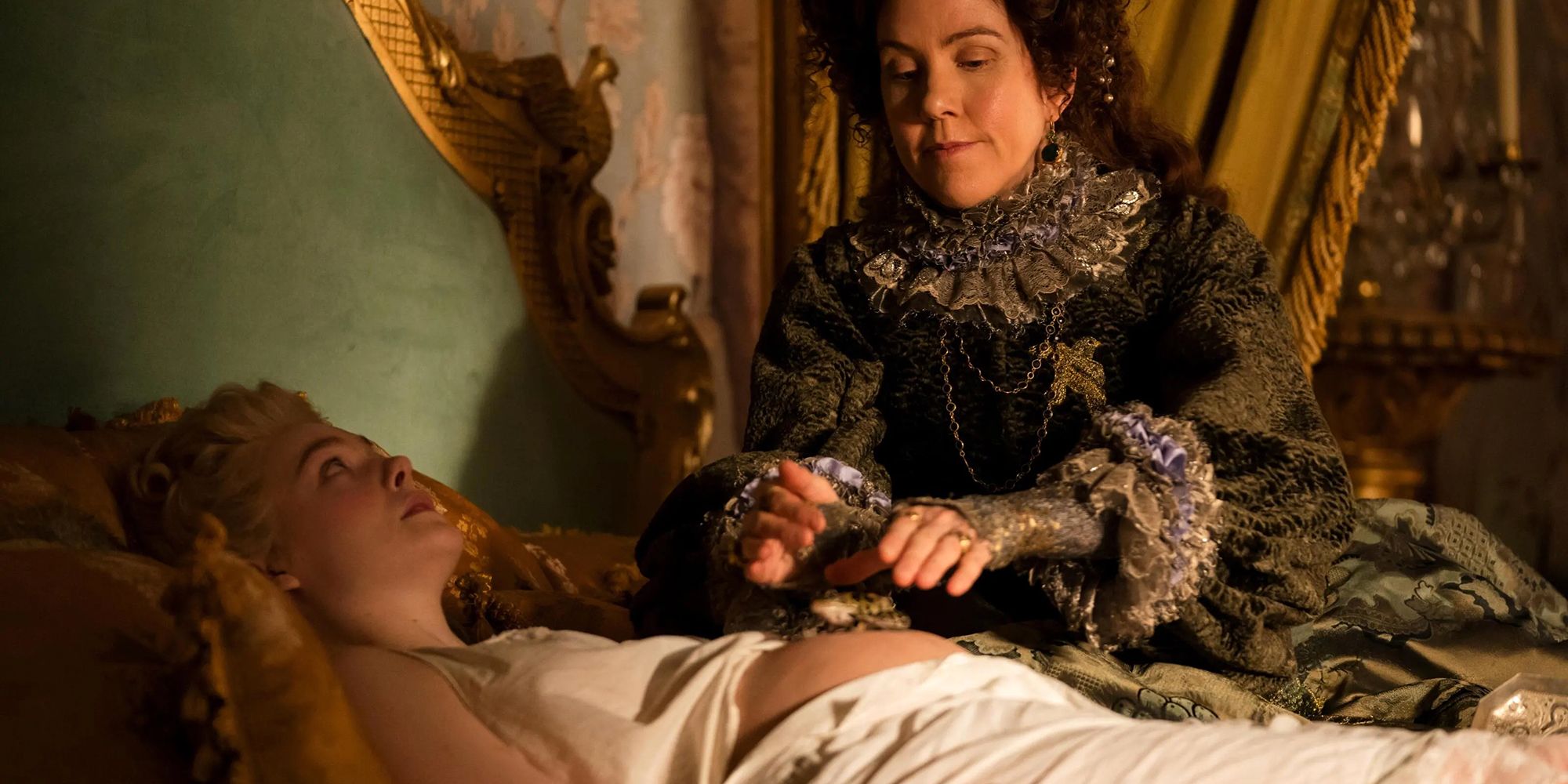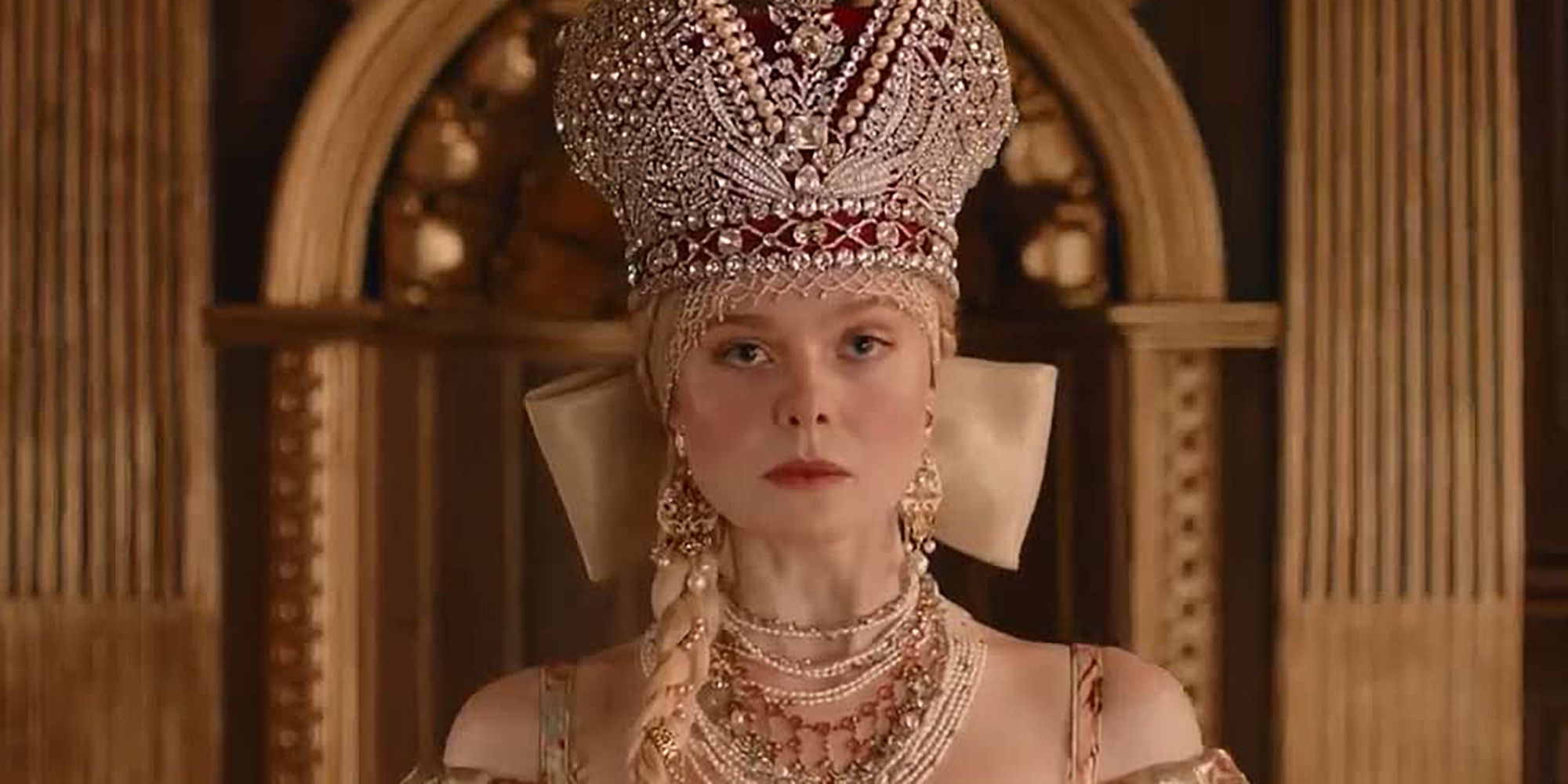An asterisk appears on the title card of every episode of The Great, forewarning that what is portrayed is 'an occasionally true story'. So how true-to-life is the show? What really happened, and what is the product of the show runner's, Tony McNamara’s, imagination?While Catherine the Great — wonderfully brought to life by Elle Fanning — and Peter III (Nicholas Hoult) existed, some of The Great’s characters are purely fictional: Phoebe Fox in her scene-stealing turn as Marial, religious advisor Archie (Adam Godley), and Sacha Dhawan’s bureaucratic Orlo, for example. But, in telling Catherine’s origin story and the sequence of events that led to her taking the mantle of Empress, McNamara has included much that is true to history. As McNamara said in a 2020 interview with Vulture, “There were certain things that were essential to telling her story, and a lot otherwise that we would make up.”
Catherine and Peter Were Married
Catherine and Peter III were married on August 21st, 1745, but the timeline of events was altered in The Great to provide a more entertaining narrative. In the show, Peter is already Emperor whereas, in reality, he did not become Emperor upon the death of his aunt Elizabeth (Belinda Bromilow), 17 years after he married Catherine.
Sophie of Anhalt-Zerbst, a principality in modern-day central Germany, was a princess from a poor family. To bolster the family’s position Sophie’s mother, Johanna Elisabeth of Holstein-Gottorp (played with delicious relish by Gillian Anderson in Season 2), arranged for Sophie to marry Peter III, her second cousin, and nephew of the reigning Empress Elizabeth. When Sophie arrived in Russia at 16, not 19 as portrayed in the show, she learned Russian, converted to Eastern Orthodoxy, and adopted a Russian name — Ekaterina Alekseyevna — which was subsequently anglicized to Catherine. Despite its tweaks to the timeline, what The Great does accurately reflect is the total mismatch between Catherine and Peter and the unhappy marriage that followed.
Peter Was Prone to Narcissism, Violent Outbursts and Public Meltdowns
Peter III was German like Catherine but was not, as depicted in the show, the son of Peter the Great; he was his grandson. Contrary to Nicholas Hoult’s portrayal of Peter as a fervent devotee of Russia, the real Peter despised anything Russian. He refused to learn Russian or eat Russian food, preferring instead to wear the colors of his beloved Germany and even going so far as to worship Frederick II of Prussia, the sworn enemy of then-Empress Elizabeth.
In The Great, Peter is the epitome of oafish hedonism and lasciviousness. His mercurial temper means that, at one moment, he has a propensity to kill both animals and humans while pining for his mummified mother the next. Although there is no historical record of Peter’s mother being mummified, there is evidence that The Great’s portrayal of Peter is fairly spot-on. According to Catherine’s memoirs, Peter III was an insufferable, childish brute and a drunkard, in keeping with the way he is portrayed in the show.
The Russian Court Was Obsessed With Sex
One thing The Great accurately reflects is the Russian court’s obsession with sex, played out in the relationship between Nicholas Hoult’s Peter, his best friend Grigor (Gwilym Lee), and Grigor’s wife — Peter’s favorite mistress — Georgina (Charity Wakefield).
It was no secret that both Catherine and Peter took lovers; their unhappy marriage causing them to seek intimacy elsewhere. In the show, Catherine’s lover Leo (Sebastian De Souza) is a fictional character, but Catherine is known to have taken several lovers during her marriage to Peter. This led to speculation about the paternity of her children, with Catherine herself hinting very strongly in her memoirs that none of her children — she had three — were fathered by Peter. Catherine’s true love was Grigory Orlov. Interestingly, although Orlov has not yet appeared in The Great, the characters of Grigor and Catherine’s ally Count Orlo borrow elements of his name.
Catherine Was Devoted to Literature, Science and the Arts
“Women are for seeding, not reading,” Peter tells Catherine in the first episode of The Great before he sets fire to the school for girls Catherine had established. Unperturbed, Catherine continues fighting for the education of women, particularly, and of Russians in general. Committed to bringing the greatest European intellectuals and scientists to Russia, Catherine brought about the Russian Enlightenment, profoundly improving Russian culture through modernization and the abolition of serfdom. Looking to countries such as Britain for inspiration, in 1764 she established the Smolny Institute, Russia’s first educational institution for women and the first public educational institution in Europe.
Catherine was particularly close with French Enlightenment writer and philosopher Voltaire (Dustin Demri-Burns), writing to him for 15 years, from the time she became Empress until his death. Although Voltaire never appeared at the Russian court and he and Catherine never met face-to-face, he remained a staunch supporter of her and she of him.
Catherine Established Smallpox Inoculation Across Russia
In the Season 1 episode "A Pox on Hope," Catherine infects herself with smallpox in front of the Russian court after learning about the concept of immunization through inoculation. While the scene was adapted for dramatic effect, the truth is that Catherine did perform inoculations on herself and her son, Paul I.
In 1768, countries across Europe were desperate to cure the deadly disease. Catherine was impressed by the work of British doctor, Thomas Dimsdale, who had been deliberately infecting patients with a mild form of smallpox to create immunity. She invited Dimsdale to the court to inoculate her which, after proving successful, resulted in a mass inoculation program being rolled out across Russia. To reward the peasant boy who provided the smallpox sample used for her inoculation, Catherine made him a noble.
She Invented the Roller Coaster
When you think of roller coasters, you tend to think of the massive, metal, twisting behemoths you see at amusement parks and resorts all around the globe. However, you may be surprised to learn that the origins of these attractions go way back, as far back as the 18th century.
True to Season 2’s episode "Stapler," Catherine was responsible for putting the rollers on roller coasters. Before Catherine’s addition, in 1784, of wheels and grooved tracks, Russians used sleds to careen down a 600-foot ice ramp. Her improvements meant that the ride could be enjoyed outside of Russia’s icy terrain and, indeed, she installed a roller coaster at her summer palace.
Aunt Elizabeth was Real
Belinda Bromilow’s Aunt Elizabeth is a kooky, sexually liberated woman — she has images of the Kama Sutra painted on her walls — with the ability to train butterflies. History does not confirm whether these things are true but does indicate that Elizabeth was intelligent and outgoing.
The daughter of Peter the Great, Elizabeth was Empress of Russia from 1741 to 1761. She staged a coup in 1740 when Anna Leopoldovna, the only niece of the childless Empress Anna, assumed the regency for her son Ivan VI and threatened to banish Elizabeth to a convent. Elizabeth, declared Empress, had the infant Ivan and his mother arrested. The Great has taken liberties by including Empress/Aunt Elizabeth in the series. Yes, Elizabeth was real, but it was her death on 5 January 1762 that led to Peter III’s accession to the throne; she was not present to witness Peter’s rule as Emperor.
Ivan VI Existed—and Was Murdered
At two months old, Ivan VI was proclaimed Emperor of Russia under the regency of his mother, Anna Leopoldovna. His reign was short-lived, ending when Elizabeth seized the throne 13 months later, arresting the child-Emperor and his parents and keeping Ivan in solitary confinement for the next 20 years.
In the Season 1 episode "War and Vomit," Elizabeth murders the young Ivan (Charlie Price) to prevent him from exercising his claim to the throne, which is close to what happened. To remove Catherine as Empress, in 1762 a lieutenant named Vasily Yakovlevich Mirovich sought to free Ivan, who was then 23 and restore him to power. During Mirovich’s mutiny against Catherine Ivan was killed by his jailers — in keeping with the secret instructions they had been given by Catherine — thereby securing Catherine’s position as Empress until her son, Paul I, came of age.
Catherine Had a Child Called Paul (and Other Children)
Catherine and Peter's lovemaking in Season 1 of The Great occurs out of a duty to produce an heir, which fits with the real-life relationship between the two. In the series, Catherine’s lover, Leo, is sterile, so Paul’s father is undoubtedly Peter. But, in reality, it is up for debate whether Catherine and Peter consummated their marriage, bringing into question the paternity of Catherine’s children.
Catherine had three children: Grand Duke Paul I in 1754, followed by Anna in 1757, Alexei in 1762. Paul, I was officially the son of Peter III but Catherine, in her memoirs, strongly suggests that the father was her lover, Count Sergei Saltykov. Anna was rumored to be the offspring of Catherine and the Polish aristocrat StanisÅ‚aw Poniatowski. Both Paul and Anna were raised by Aunt Elizabeth; sadly, Anna died at age 15 months. Alexei’s father was Grigory Orlov. A fourth child, Elizabeth, was born in 1775, many years after the death of Peter III. She is thought to have been fathered by Grigory Potemkin, another of Catherine’s lovers, but the child was never acknowledged by Catherine.
Catherine’s Coup D’état
Although Fanning’s Catherine overthrows Peter and replaces him as Russia’s ruler, she keeps him around the court (albeit confined to his room). Historical events are a little more, well, murderous. Since his accession to the throne, Peter III’s military campaigns had failed miserably, badly damaging Russia’s reputation both at home and on the world stage. Alliances that Catherine had secured since her arrival at court, as well as popular opinion, ensured that it was easy to rally aristocrats and the military to her cause.
On 28 June 1762, just six months into Peter III’s reign, Catherine gathered her cadre of her supporters to facilitate a coup. It was all over very quickly. The same day that Catherine was declared Empress of Russia, Peter was arrested and forced to abdicate. Eight days later he was assassinated, most probably by Alexei Orlov, the younger brother of Catherine’s lover and court favorite, Grigory.

